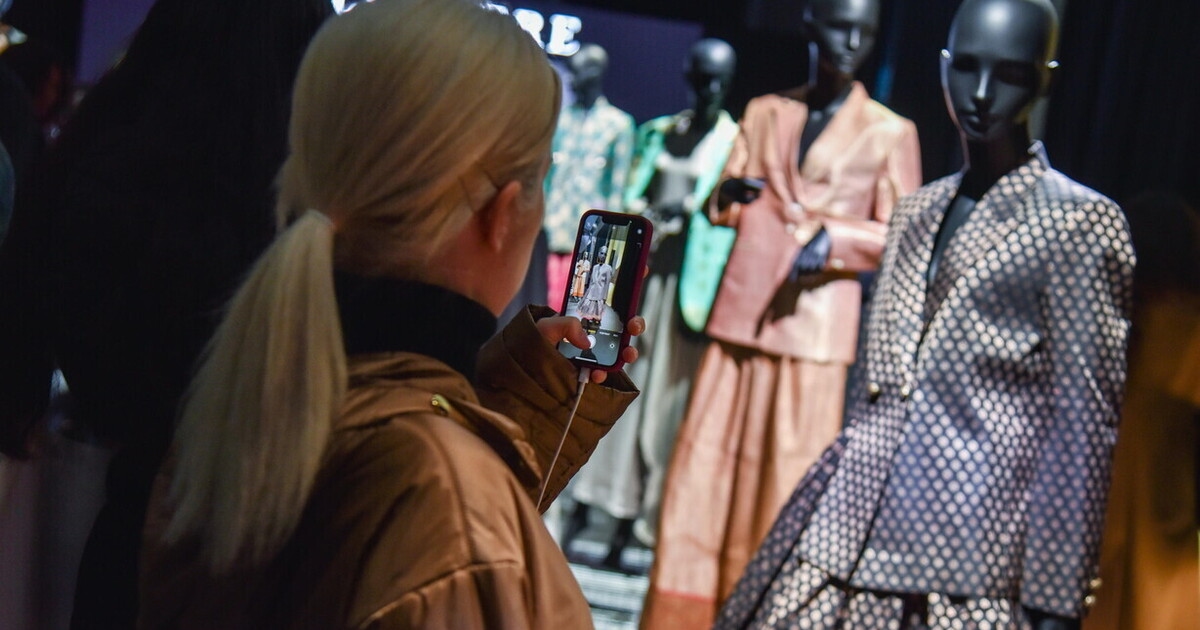The Right Price. How to Keep a Cool Fashion Score


Glenn Martens, creative director of Maison Margiela and Diesel, on the set of the campaign for the limited edition line he created for H&M
the fashion sheet
Whatever way you look at it, from the supply chain (the distortions are corrected by paying better, first of all) to the new collaborations between star designers and fast fashion, the time has come to introduce into the system that old concept dear to the mass market: the relationship between value and cost. Which cannot simply be "perceived."
In short, it's not a question of style or disaffection, but of price. Real, perceived, too low, too high, missed, hypothetical. It's a money problem that troubles the president of the Chamber of Fashion, Carlo Capasa, when he laments the failure to include in the Competition Bill approved by the Senate the measures already announced by the government to combat ultra- fast fashion , a phenomenon that is seriously crippling the Made in Italy supply chain. Minister Adolfo Urso responds that he will take "the first available measure." The commercial split underway in France between Galéries Lafayette and the Société des Grands Magasins is a question of price, following the decision by its owner Frédéric Merlin to host the Chinese brand Shein ( which has been at the centre of a global controversy for hours also for the sale of inflatable child-like dolls on the platform : the French government will ask for a list of buyers, and the Chinese leaders have made themselves available to provide them. If I were in the shoes of the Italian Postal Police, I would take a look online myself, who knows what might come out) inside five affiliated stores. The battle for transparency in the supply chain, which is Italy's pride and joy, is a question of price. As the new president of CNA Federmoda Nazionale, Doriana Marini, clearly expressed in the meeting we had about ten days ago at the Chamber of Deputies (see page 2), a balanced relationship between demands and prices paid to a healthy and clean supply chain would prevent some small, under-supplied laboratories from subcontracting to laboratories that do not comply with minimum workplace safety standards and underpay their employees. On this point, it's worth adding that if the managers of large fashion companies hadn't been rewarded for years for the cost cuts they managed to implement, perhaps there would have been fewer distortions. As Antonella Centra, an ESG specialist lawyer who was already at the top of the practice at Gucci, pointed out, the ways to understand how and where to intervene are evident just by reading the financial statements, and by knowing and wanting to do so. As Brunello Cucinelli often says, paying the manufacturer five euros more for a garment doesn't significantly erode margins and puts everyone in a position to work better, with fairer wages and greater satisfaction. It also reassures a public that is increasingly less interested in paying the brand pro rata for the party they missed and the Hollywood fashion show they could only witness on Instagram, and that, after the latest scandals about supply chain distortions, has begun to grow suspicious. But it's clear that brands are also realizing the shift.
A few weeks ago, during the presentation of Deloitte's new research on the evolution of branding , not necessarily fashion, conducted in seven countries and on a sample of over seven thousand people (read the accompanying editorial by Andrea Laurenza, a Deloitte partner who, in addition to his many skills, including musical ones, given that he founded the consulting giant's radio station and writes books on the history of pop, also heads the consumer industry division for the Central Mediterranean area), it became clear how commercial brands continue to represent a point of reference for consumers, even superior to the government brand which, in some countries, including Italy, enjoys less trust than that of its own community (in the Emirates, on the contrary, trust in the government is very high). But if companies with clear identities, authentic narratives, and direct relationships continue to perform so well that analysts, perhaps to boost their morale, take them as a sign of sector recovery, which they are not—because, on the contrary, the market will become increasingly polarized—it is also true that "there is a high propensity for infidelity, for switching." We look for the best deals, a correct cost-benefit ratio: the fact that the line developed by Glenn Martens for H&M, which is also largely inspired by the history of the famous designer Martin Margiela, of which he took over the creative direction less than a year ago, sold out in four days (sales began on the morning of October 30th, yesterday there was no longer a single item available anywhere in the world), says a lot about the type of fashion that people want to buy today and above all how much they intend to spend for a new item that is fun and "makes the season", which is exactly what our mothers said to themselves forty years ago, when dressing by designers was something exciting, accessible and not that slapdash about heritage and iconic codes that are often just an excuse to raise the prices of industrial objects and clothes beyond the limits of what is acceptable and as long as the game holds (speaking of historic brands and heritage, a few hours ago the fashion house Balmain announced that it had consensually terminated, after fourteen years, the contract with Olivier Rousteing, who will be there for you). He had joined at twenty-four, brilliant and charming and even revolutionary, but in the process he had completely erased the memory of the jolie madame of the founder, Pierre Balmain, who dressed Gertrude Stein and Alice Toklas for free because he rightly found them brilliant and who for years decorated and garlanded the "premieres" at the Teatro alla Scala with flowers. Until now, in fashion, value for money was an unpleasant concept, and its application, though widely practiced, utterly indescribable. The lexical and semantic universe of high-end fashion was blurry, evanescent; for years, at the beginning of the millennium, we were tormented by the epic of "accessible luxury" which in some cases resembled the production of low-cost chains. Now, value for money has become the linchpin around which, albeit with winged and seductive circumlocutions, attempts are made to make hypothetical customers—in the West, with the very reluctant exception of the US—understand why it is worth spending such a sum on a coat. The issue, therefore, has shifted to another: establishing the right balance between brand credibility and prestige, the intrinsic value of the garment, and the price printed on the label. After two generations in which the brand has dominated everything, even content creators who point out the flaws in the national supply chain, without ever having set foot in a factory, would be unable to distinguish one suit of armor from another, or satin from duchesse satin. "It's a balance in which many factors come into play, including economic factors, although they don't vary greatly: a solid relationship, built over time, also represents comfort for the customer," says Gianni Giannini, president of Doucal's, echoed by Peserico CEO Riccardo Peruffo, pointing out what is increasingly one of the system's weaknesses: "The right relationship is a balance between the perceived value of the brand and the tangible quality of the product, with a price that reflects artisanal excellence without ostentation. The customer must feel like they're paying for authenticity, not marketing." This is also the choice made by Beatrice Beleggia, appointed by her father Lanfranco, founder of the Brosway group, to manage the Pianegonda brand, when she developed a line with fashion and jewelry designer Maria Vittoria Paolillo: "We want young people to feel comfortable with a historic brand like this and its new design." So, very slim margins, investment in building trust in a line that overlooks the Quadrilatero, then we'll see.
More on these topics:
ilmanifesto





